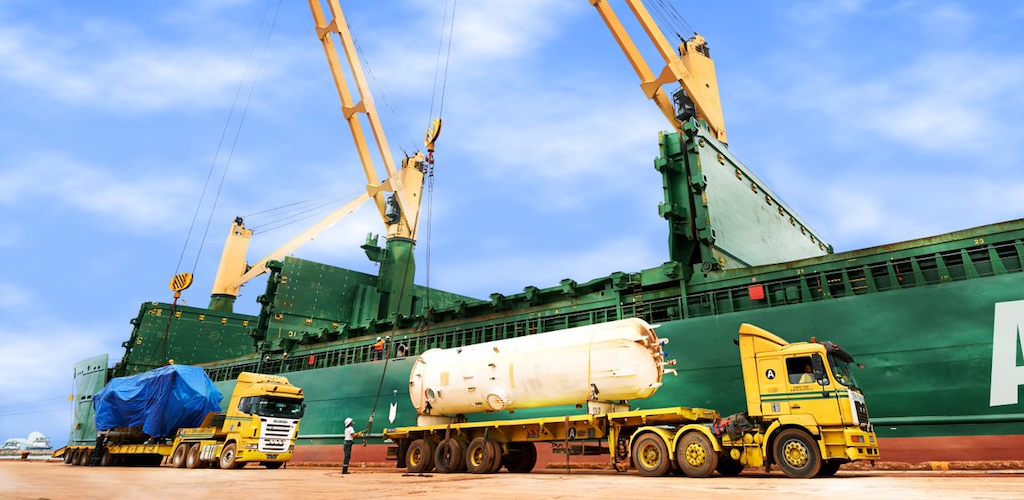May 19 | 2021
(Global) Middle East, Australia to Lead Short-term Demand

By Malcolm Ramsay
Growth in the LNG sector is forecast to drive upside for breakbulk operators over the next decade, as demand for project cargo ramps up and major projects come online around the world.
Long touted as a cleaner alternative to marine fuel oil, LNG has seen record growth over the last 12 months as a combination of factors has intensified interest in the sector. With this demand growth has come an acceleration in project development at all scales with gas-rich regions forecast to drive the next wave of development.
“In the short term the Middle East and Australia are taking the limelight. Earlier this year, Qatar Petroleum progressed with FID (final investment decision) on the North Field East Project, as it aims to maintain its lead position as the world largest LNG producer. Compared to the LNG projects in North America, the Barossa gas and the Scarborough to Pluto LNG projects in Australia have more certainty for FID in 2021,” Kyriacos Panayides, managing director, AAL Shipping told Breakbulk.
Fundamental Shift
Traditionally seen as a fuel for smaller vessels, the shipping industry has seen adoption of LNG mature this year with many of the largest newbuild vessels in the world now running on LNG. In 2020, shipping group CMA CGM introduced the LNG-powered Jacques Saade, one of world’s largest container ships with capacity for 23,000 TEU.
“There has been a fundamental shift in the marketplace as LNG has become more widely available and we have seen it become a fuel of choice in global trade lanes to meet the new demand for decarbonization. We are now seeing the broad development of LNG global trade lanes, with LNG available in quantity at multiple points around the globe,” said John Hatley, vice president marine solutions for Wärtsilä North America.
This fundamental shift has been seen not only for LNG as a fuel for transport but also for new power generation projects around the world. As governments seek to switch away from coal power, LNG is fast emerging as an alternative in many regions, particularly Asia, and this in turn is driving investment in new export projects such as the Sabine Pass and Corpus Christ LNG facilities developed by Cheniere Energy in the U.S.
“Natural gas use in power generation capacity is expected to grow by an additional 300 GW by 2040, equivalent to 300 million tonnes of LNG. The majority of the demand comes from Asia, especially China, India and other Southeast Asia countries, as these regions embark on major gas infrastructure expansion, further encouraged by a global effort to reduce GHG emissions and use cleaner fuels,” explained Steven Ho, upstream oil and gas analyst at GlobalData.
Under pressure due to the collapse in U.S. shale prices, Cheniere has demonstrated the strong fundamentals of the LNG sector, reporting revenue of US$3.09 billion for the first three months of 2021.
“Cheniere has been struggling to meet expectations for the past few quarters and needed the result this quarter to prove that its LNG business has long term resilience, as LNG demand is expected to continue growing through 2024,” Ho said.
Panayides also sees positive long-term demand in the sector, commenting “Based on local market intelligence we are gathering, we forecast that in the medium and longer-term new LNG projects and related project cargoes will be focused in North America (410 billion cubic meters), Russia (190 billion cubic meters) and the Middle East. The growth of this sector is also forecasted by Rystad Energy & Shell – both reporting that by 2040 demand for LNG will grow by 24 percent to 4,867 and 5,000 billion cubic meters, respectively.”
AAL predicts that most LNG plant component fabrications will continue to be undertaken in Asia or Europe, shaping the trade routes for breakbulk transport as cargo moves from these two regions directly to the projects locations.
“Other than new LNG production projects, a strong demand for LNG within Asia will also lead to LNG-related projects popping up such as storage facilities and terminals. That should also boost demand for heavy lift MPV tonnage,” Panayides adds.
Challenges for MPV sector
Despite the positive momentum in the sector, downside risks remain for breakbulk operators serving the sector, not least the huge uncertainty over global energy policy over the next ten years. While government’s around the world have reaffirmed their commitment to climate targets in the wake of the covid pandemic the ultimate shape of new legislation remains undecided.
This could mean that current incentives for cleaner fuel are removed in some regions but also may mean that other regions leap-frog LNG development and move straight to greener fuels such as hydrogen.
"The challenge to LNG today is that the world is moving rapidly towards decarbonisation. The viability of new LNG projects is potentially at risk – as LNG is an emissions-intensive energy source at its upstream stage. This is also the reason why gas demand within Europe is on a negative trajectory rather than positive. Utilities providers in Europe have already started to move away from LNG to other forms of greener energy such as hydrogen. in April 2021, Germany’s Uniper SE even decided to convert a planned LNG terminal into a hydrogen hub,” Panayides explainrf.
This uncertainty over the speed of policy roll-out is likely to dampen appetite in some quarters while at the same time leading to developers seeking to gain economies of scale by building larger LNG projects.
“The main challenge for the MPV sector is that modules required for LNG project are getting larger as developers look to reduce capex. Among other things, larger modules ensure better production quality, less on-site engineering work and a reduction in scheduling at installation sites. The efficient transportation of these components will require the use of larger heavy lift MPVs and with experienced operators to ensure that the handling of these bigger and more expensive modules is safely executed. For AAL, this is very much in line with our ongoing fleet strategy to operate a large number of ‘mega size’ heavy lift vessels,” Panayides concluded.
Subscribe to BreakbulkONE and receive more industry stories and updates around impact of COVID-19.



